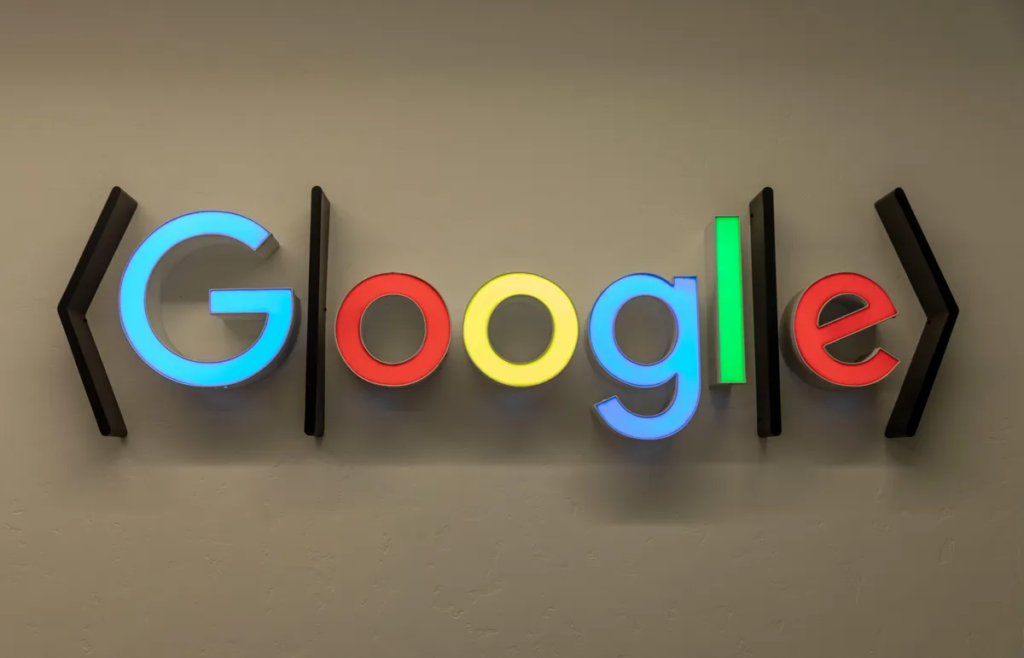Google’s Quantum Computer: A Cold and Complex Marvel
A Google quantum computer, depicted without its refrigeration housing, consists of multiple layers arranged from top to bottom, each maintained at progressively lower temperatures. The bottom layer houses the qubits, the essential quantum computing chips, which exist at temperatures just a fraction above absolute zero.
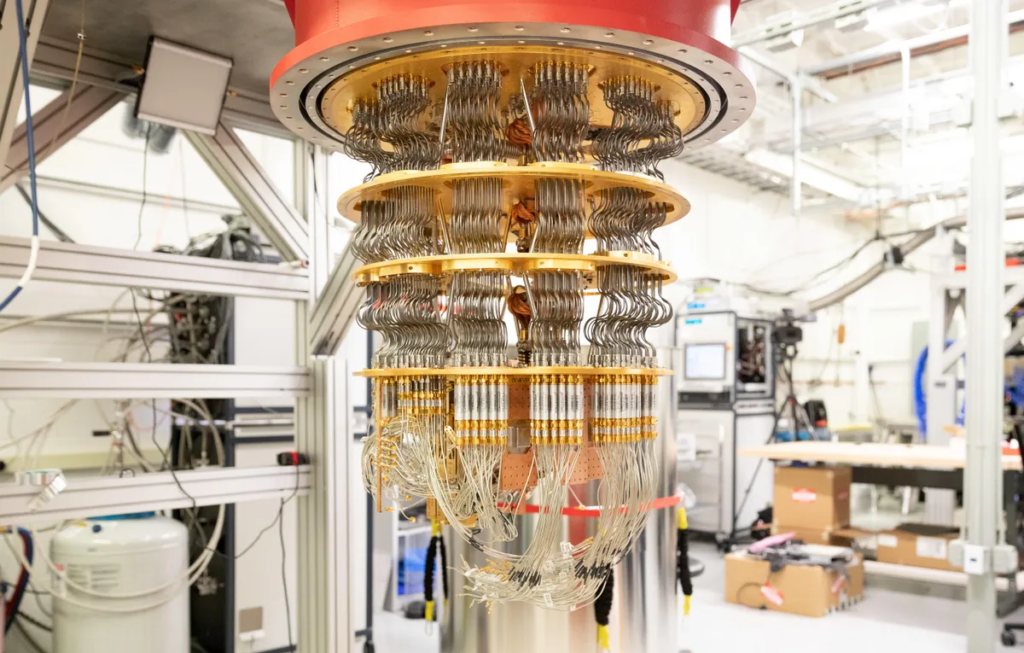
Google’s Sycamore Quantum Computing Chip: Powering Quantum Innovation
Google’s Sycamore processor incorporates numerous intricate communication lines to establish connections with the external environment. With an impressive 54 qubits, this chip serves as the fundamental unit for storing and processing data in the realm of quantum computing.
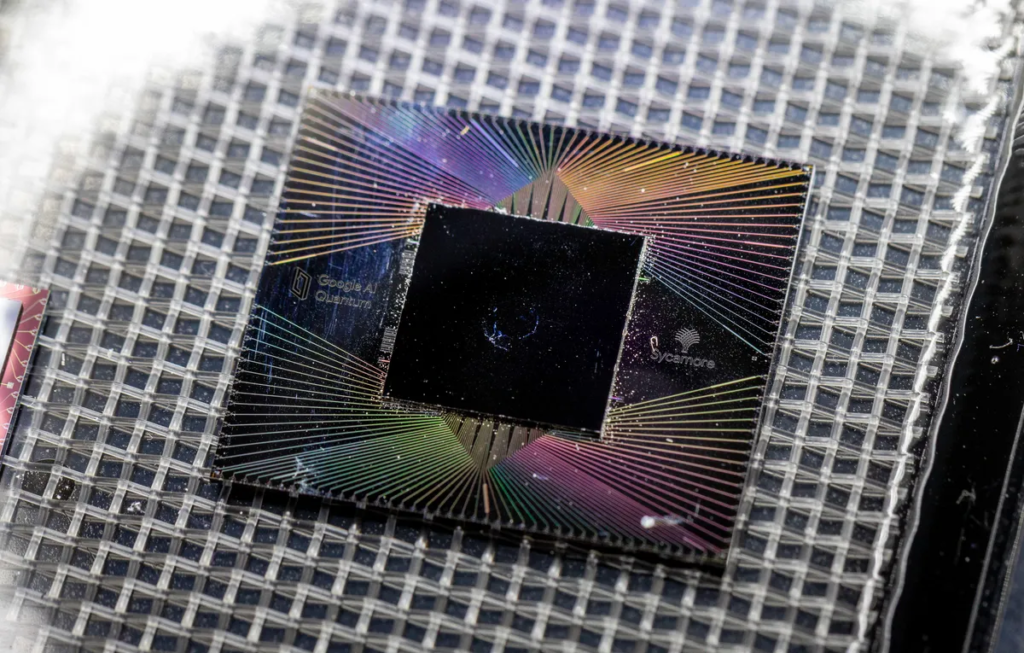
Google Sycamore Quantum Computer: Unleashing Quantum Supremacy
The Google Sycamore quantum computer, fueled by its powerful 54-qubit Sycamore processor, conducted a groundbreaking experiment that showcased quantum supremacy. To ensure the utmost stability, the computer is encased in a large cylinder, maintaining an extremely cold environment to prevent external energy from disrupting the highly sensitive qubits.
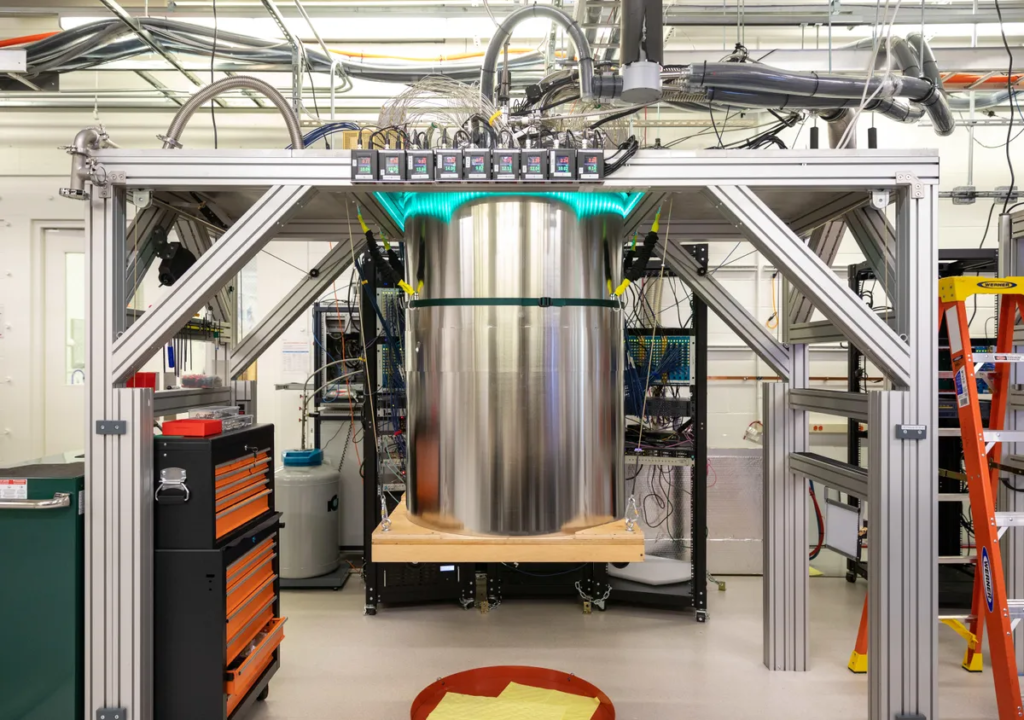
Google Quantum Computing Sticker: Embracing Quantum Humor
Adding a touch of humor to the quantum computing world, a sticker on a researcher’s MacBook showcases superposition, one of the intriguing phenomena of quantum physics that underlie the extraordinary capabilities of quantum computing.
READ AlSO: Unveiling Windows 12: Our Knowledge and Desired Features
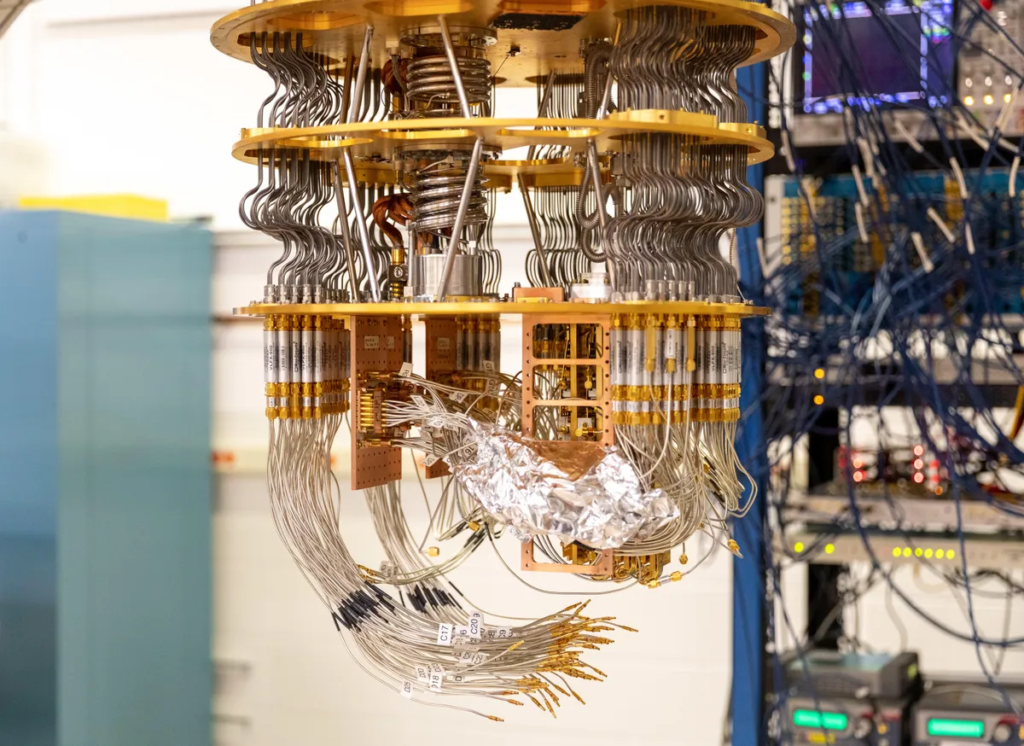
Google’s Quantum Computer: Coaxial Cable Communication and Versatility
Google’s quantum computer employs an impressive 216 channels of coaxial cable to establish communication with its qubits. In accordance with ongoing research requirements, certain channels may be intentionally disconnected as needed, showcasing the system’s flexibility and adaptability.
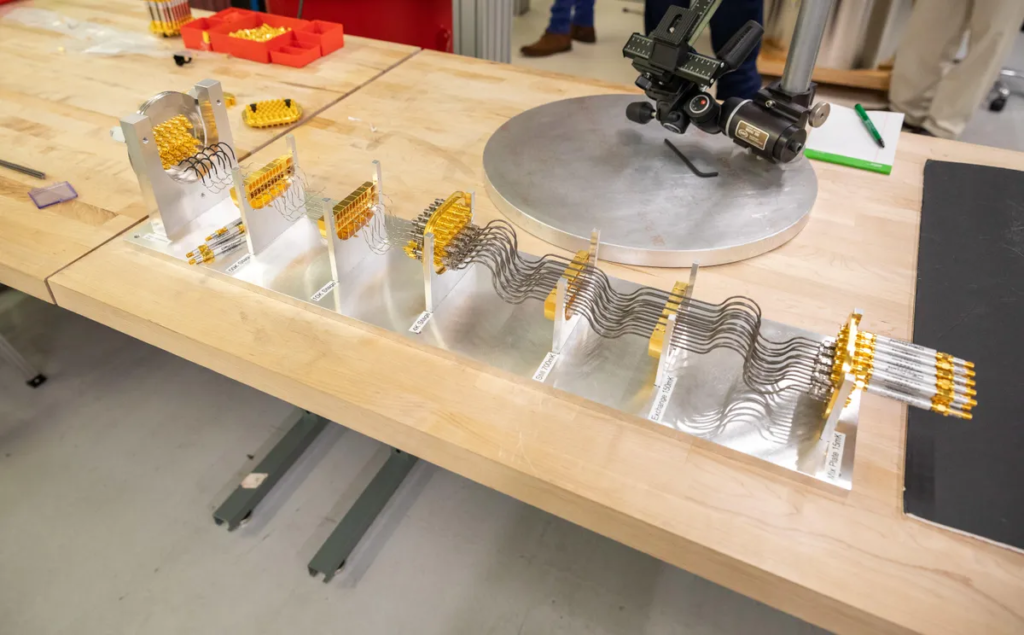
Google Quantum Computing Control Lines: Precision and Costly Connectivity
For illustrative purposes, the control lines of Google’s quantum computer are extended, representing the intricate network required for precise control. These coaxial cables, though crucial, come at a significant price, with each 2-foot segment costing approximately $1,000, emphasizing the substantial investment involved in quantum computing connectivity.
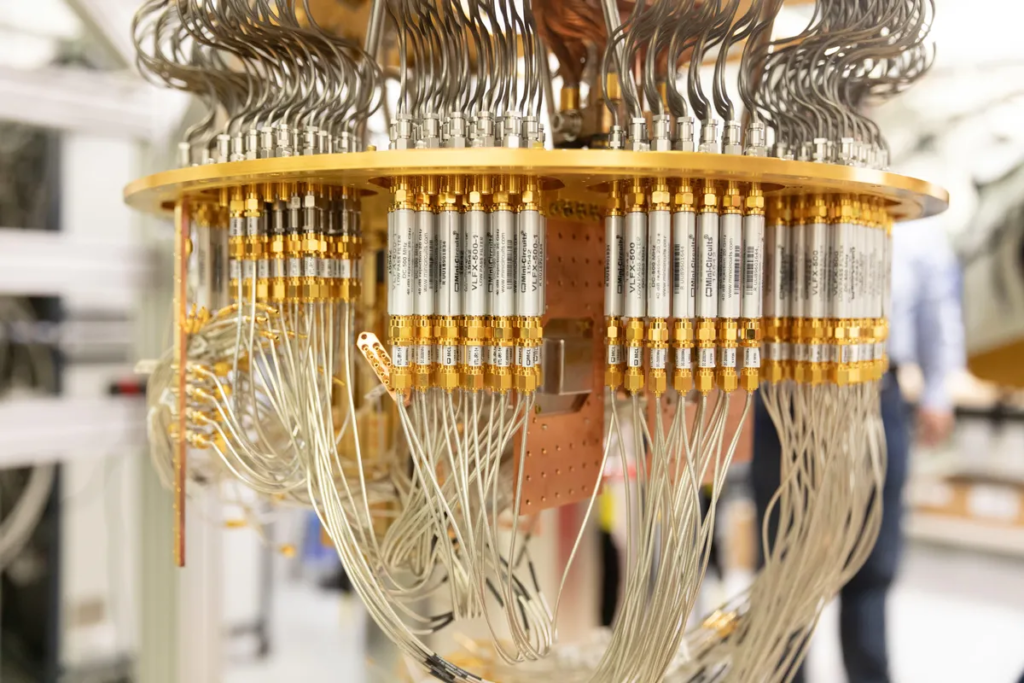
Google’s Quantum Computer: A Complex Network of Control and Computation
Google’s quantum computer is a marvel of complexity. The intricate web of lines depicted here serves the purpose of transmitting electromagnetic signals, enabling the control of computation and the retrieval of data from the qubits responsible for processing the information.
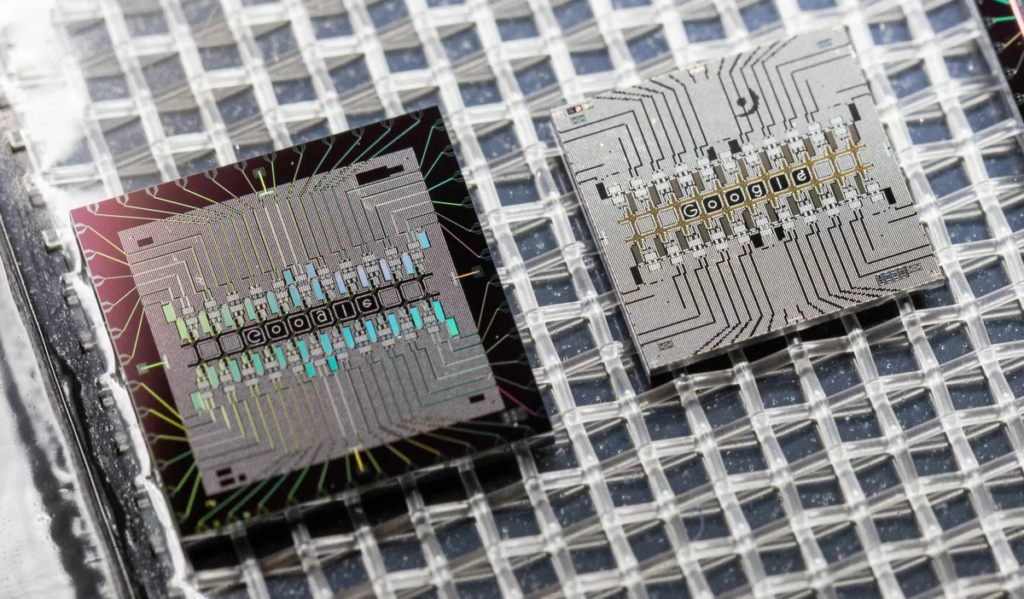
Inside Google’s Quantum Computer: The Intricate Components of the Sycamore Chip
Google constructs its Sycamore quantum computing chip by seamlessly bonding two essential parts. On the left, we find the controller interface, facilitating communication with the external world. On the right, the chip element houses the qubits responsible for data processing. A closer inspection reveals the clever incorporation of the word “Google,” formed by minute iridium dots nestled in between the components.
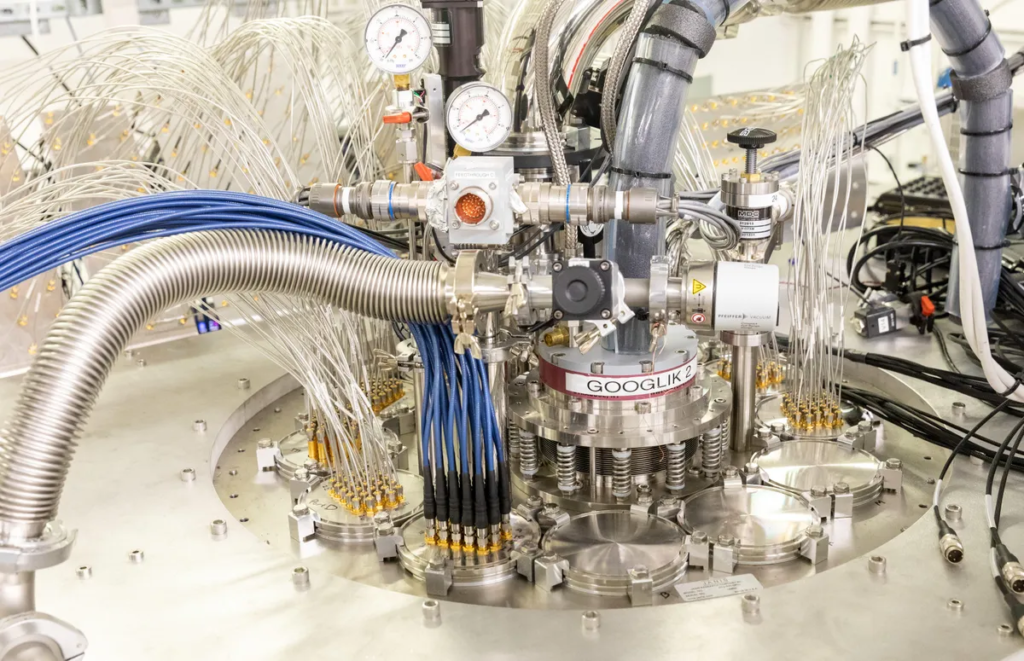
Google’s Quantum Computer: Cooling and Communication at the Summit
At the pinnacle of Google’s quantum computer, a cluster of communication links and equipment is situated, enabling the circulation of liquid helium coolant throughout the machine. This critical cooling system plays a vital role in maintaining the optimal operating conditions for the quantum computer.
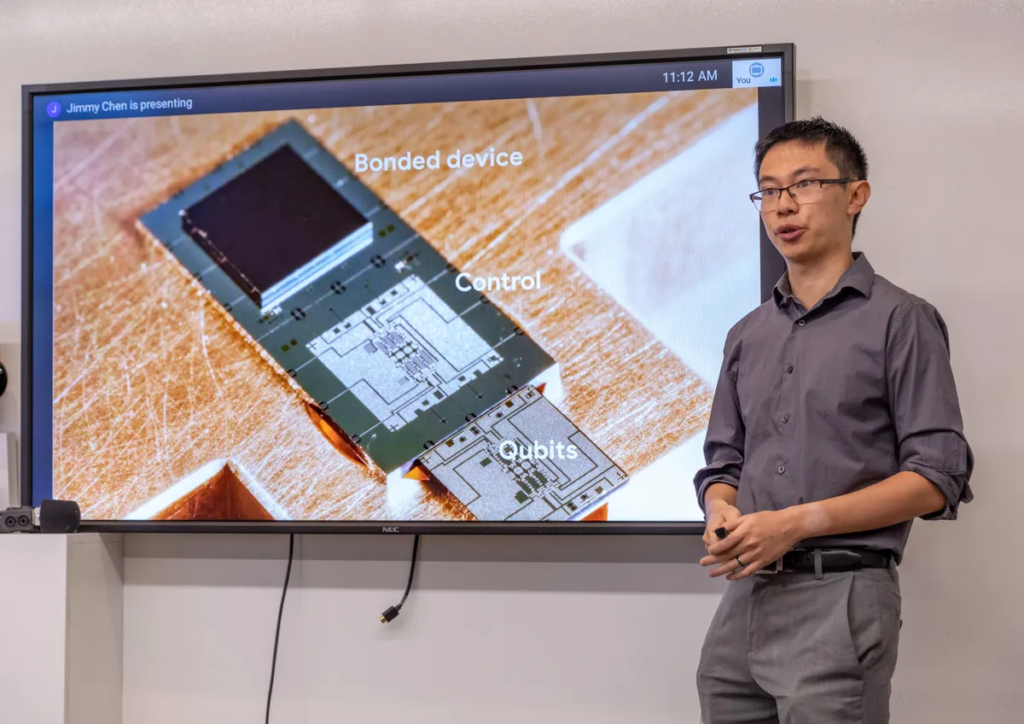
Google’s Quantum Computing Manufacturing: Custom Design and Assembly
In the realm of quantum computing, off-the-shelf components are insufficient, leading Google to undertake the design and assembly of its own custom components, including the renowned Sycamore chip. Researcher Jimmy Chen showcases the bonding process, combining two distinct chips—one housing 54 qubits and the other responsible for their control—as a testament to Google’s commitment to advancing quantum technology through in-house manufacturing.
READ ALSO: All You Need to Know About Threads: Meta’s New Twitter Rival Explained
Google Quantum Computing Earrings: A Playful Tribute to Quantum Physics
With a touch of physics humor, Marissa Giustina, a Google quantum computing researcher, adorns a matched pair of earrings featuring the iconic “bra-ket” notation from quantum physics: |>. These earrings serve as a playful homage to the fascinating world of quantum computing and its underlying principles.
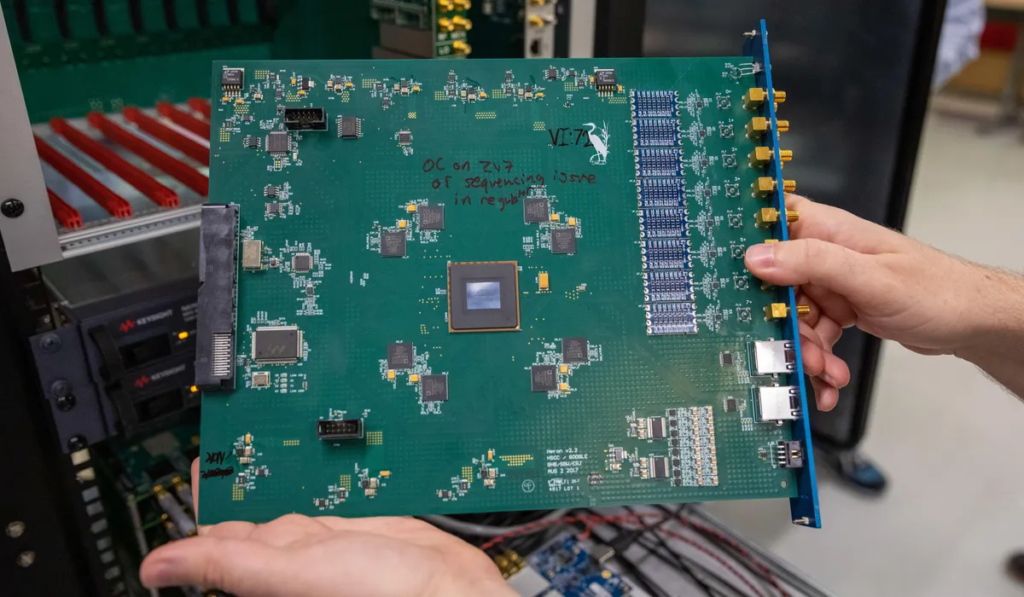
Google’s Quantum Computing Controller: Advancing Miniaturization for Qubit Communication
Google envisions the miniaturization of components like this communication control board, employed to transmit signals to qubits. As the number of qubits continues to grow, miniaturization becomes essential for scaling quantum systems effectively. Google’s pursuit of compact designs aims to optimize the efficiency and functionality of quantum computing controllers in the face of increasing qubit counts.
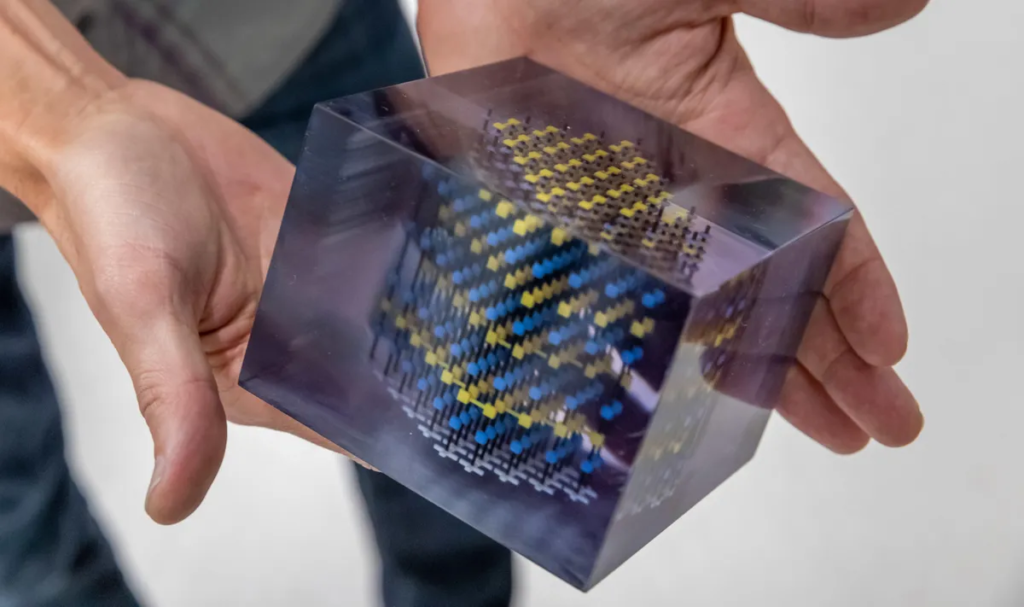
Google Qubit Sculpture: Symbolizing Quantum States and Configurations
Representing the intricate nature of Google’s Sycamore quantum computing chip, this sculpture embodies the 54 qubits arranged in a two-dimensional array. Altering the qubit configuration is central to running programs on the chip. With distinct layers symbolizing the passage of time, this sculpture visually captures the varying states of the qubits, offering a glimpse into the complexity and transformative capabilities of quantum computing.
READ ALSO: visionOS in VR: Explore Without Needing Vision Pro
Google’s Quantum Computing Future: Expanding Qubit Counts and Error Reduction
In the realm of quantum computing, Google envisions a promising future marked by substantial advancements. The company aims to achieve significant improvements by scaling up the number of data-processing qubits and implementing effective error-reduction techniques. Through these endeavors, Google anticipates unlocking new frontiers of computational power and pushing the boundaries of what quantum computers can achieve.
Google’s Quantum Computing Readout System: Extracting Qubit States
At the culmination of a quantum computing calculation, Google employs specialized hardware known as the readout system to extract and analyze the state of the qubits. This crucial component plays a pivotal role in decoding and interpreting the intricate quantum information contained within the qubits, enabling researchers to obtain valuable insights from the computational results.
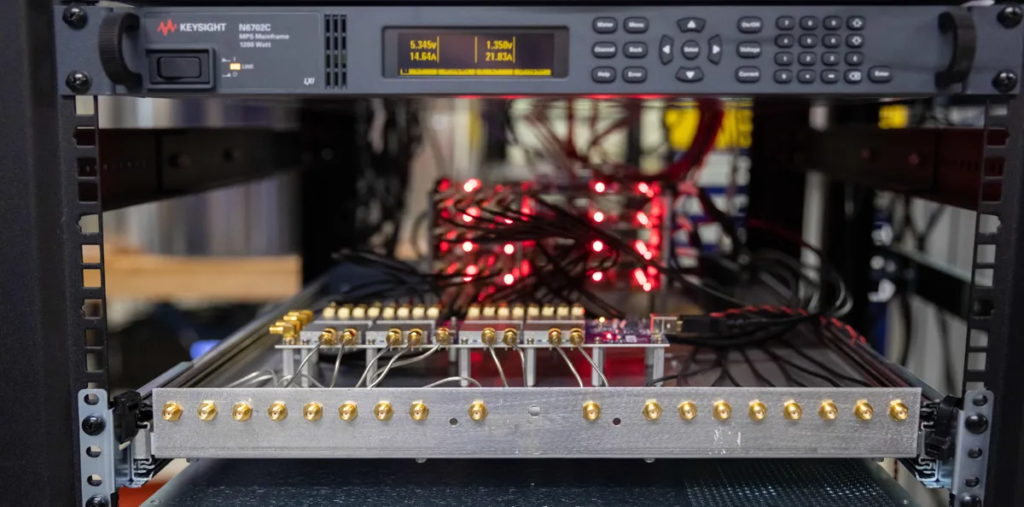
Google’s Quantum Computing Control System: Precise Communication with Qubits
To establish communication with a quantum computer’s qubits, Google utilizes a meticulously controlled electrical pulse system. In the oscilloscope display depicted above, the tightly regulated electrical pulses are visible, transmitted through wires directly connected to the quantum computing processor. This rigorous control system ensures precise and reliable interaction with the qubits, facilitating the execution of quantum computations.
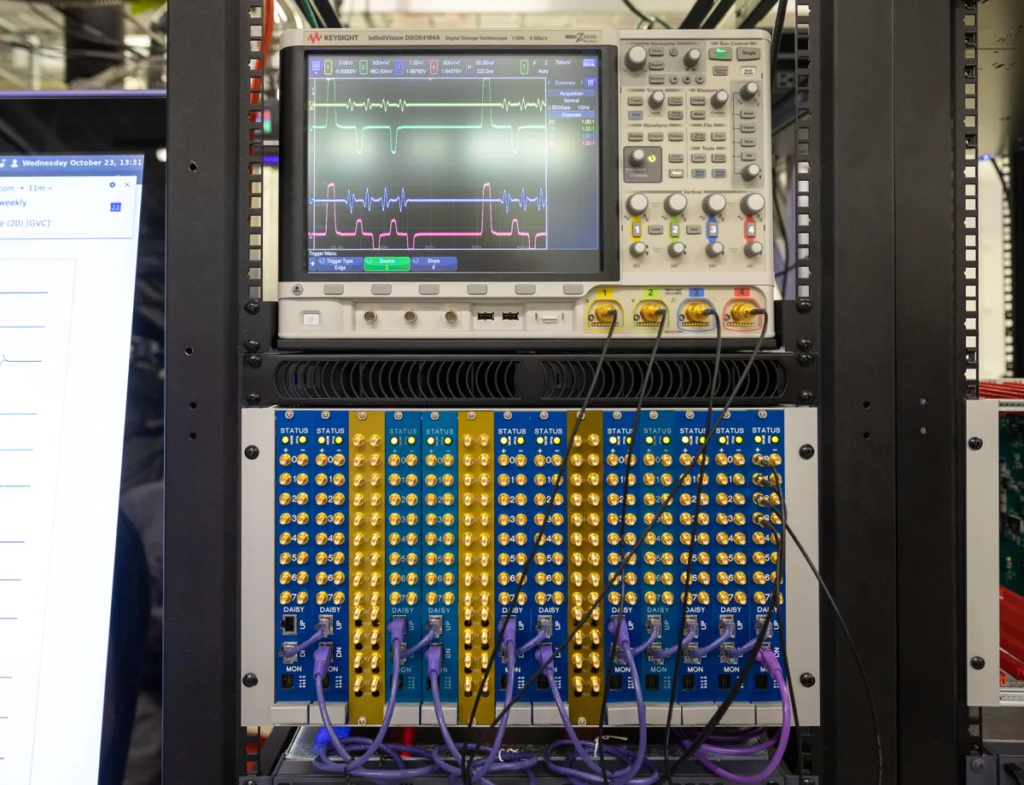
Google’s Quantum Computing Programming: Unveiling Data-Processing Instructions
On the screen displayed, Google reveals the tangible data-processing instructions transmitted to its quantum computer. This glimpse into the programming realm showcases the actual commands and algorithms utilized to harness the computational power of the quantum system, paving the way for groundbreaking advancements in quantum computing capabilities.
READ ALSO: Anticipating the iPhone 15 Amidst Rumors for 2023
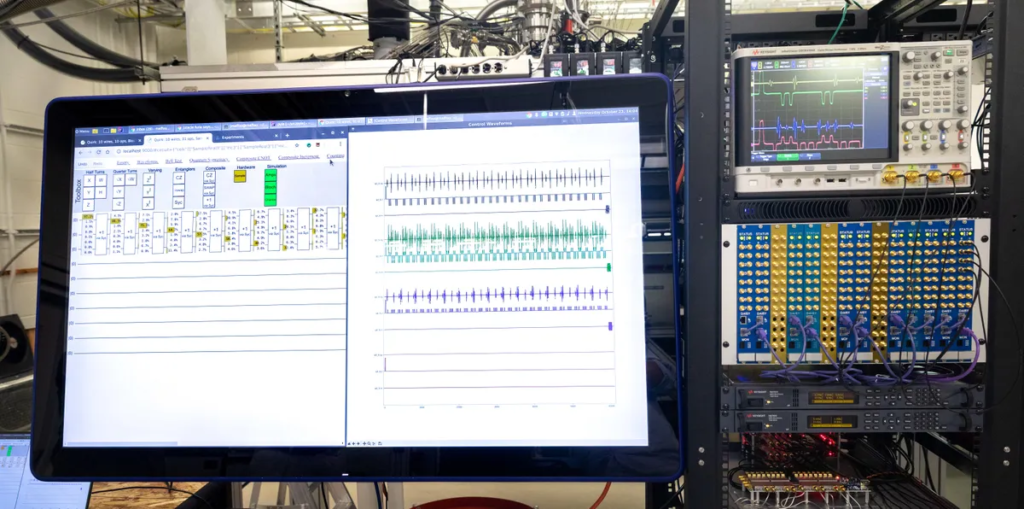
(Image credit: Stephen Shankland/CNET)
Google Quantum Physics Logo: Embracing Quantum Notation
In a testament to their dedication to quantum physics, Google’s quantum computing lab adorns the company logo with the |> notation widely recognized in the field of quantum physics. This distinctive symbol serves as a visual representation of Google’s commitment to exploring the frontiers of quantum science and technology.
